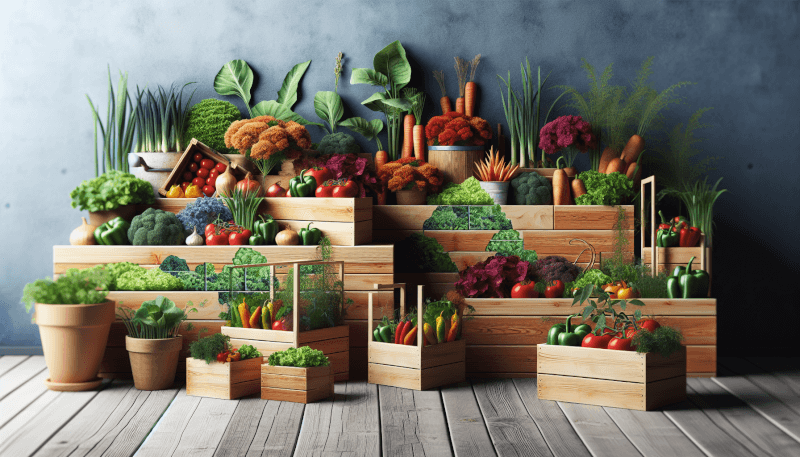If you’re an avid gardener looking for new and innovative ways to grow your plants, then this article is perfect for you! We’ve curated a list of DIY raised garden bed ideas that cater to every type of gardener. Whether you have limited space, want to add a decorative touch to your garden, or simply want to make gardening more convenient, we’ve got you covered. From repurposed materials to unique designs, these ideas will inspire you to create your own raised garden beds and take your gardening experience to new heights.
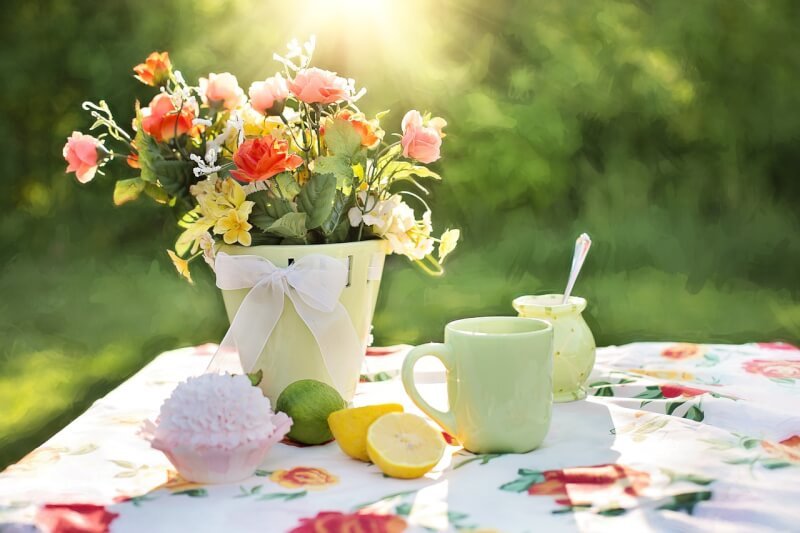
1. Raised Bed Design Ideas
When it comes to creating a raised bed for your garden, there are countless design ideas to choose from. Whether you prefer a rustic or modern look, there is a raised bed design that will suit your taste and enhance the beauty of your outdoor space. Here are five popular design ideas to inspire you:
Stacked Stone Raised Bed
For a timeless and elegant look, consider building a raised bed using stacked stones. The natural beauty of the stones will add a touch of sophistication to your garden. This design is not only visually appealing but also durable, ensuring your raised bed will last for years to come.
Cinder Block Raised Bed
If you’re looking for an affordable and versatile option, a cinder block raised bed might be the perfect choice for you. These blocks can easily be stacked to create a customized raised bed design. Plus, their hollow centers can be filled with soil or used as storage for gardening tools.
Brick Raised Bed
Brick raised beds offer a classic and polished look to any garden. The sturdy nature of bricks makes them a reliable choice for building raised beds. Additionally, bricks can retain heat, which is beneficial for plants in cooler climates. With a wide range of brick colors and sizes available, you can create a design that matches your personal style.
Wooden Raised Bed
One of the most popular choices for raised beds is wood. It brings a natural and rustic feel to your garden while allowing for various design possibilities. You can opt for a traditional rectangular shape or get creative with different sizes and configurations. Wooden raised beds are relatively easy to construct and can be customized to fit any space.
Recycled Materials Raised Bed
For an eco-friendly approach, consider using recycled materials to build your raised bed. Items such as old wine barrels, shipping pallets, or reclaimed lumber can be repurposed to create a unique and sustainable design. Not only will you be reducing waste, but you’ll also add a distinctive touch to your garden.
2. Vertical Gardening in Raised Beds
Vertical gardening is a fantastic way to maximize space in your raised bed while adding visual interest to your garden. Here are some innovative vertical gardening ideas for your raised bed:
Hanging Trellis System
A hanging trellis system is ideal for vining plants such as tomatoes, cucumbers, and beans. By attaching a trellis to your raised bed, you can train your plants to grow vertically, saving valuable ground space. This not only makes harvesting easier but also creates a stunning garden feature.
Vertical Pallet Planter
Repurposing a wooden pallet into a vertical planter is a trendy and budget-friendly option. Simply attach pots or planters to the pallet’s openings and fill them with your favorite plants. This vertical display will add height and beauty to your raised bed while utilizing limited space efficiently.
Wall-Mounted Planter Boxes
If you have a wall or fence near your raised bed, consider installing wall-mounted planter boxes. These boxes can be easily affixed to the vertical surface, creating a lush and eye-catching display. You can mix and match different plants to create a unique and vibrant oasis.
Tiered Raised Bed
A tiered raised bed is an excellent choice if you have limited horizontal space but still want to grow a variety of plants. By incorporating multiple levels, you can create a layered garden that maximizes your growing potential. This design also allows for better drainage and easier access to your plants.
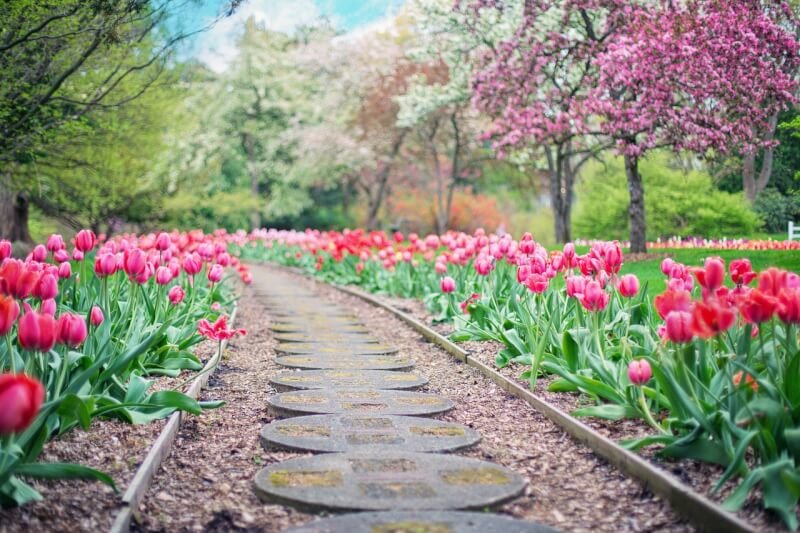
3. Creative Shape and Structure Ideas
Why settle for a traditional rectangular raised bed when you can add extra charm and personality to your garden? Here are some unique shape and structure ideas to elevate your raised bed design:
Circular Raised Bed
A circular raised bed is a captivating feature that adds a sense of flow and harmony to your garden. This shape allows for easy access to your plants from any angle and creates a visually striking centerpiece. Depending on the size, you can either have a single circular bed or incorporate multiple smaller circles for added interest.
Keyhole Raised Bed
Inspired by the shape of a keyhole, this raised bed design offers both functionality and aesthetic appeal. The main bed area is round or oval-shaped, with a narrow path leading to the center. This path allows easy access to all parts of the bed without the need to step on the soil, minimizing compaction.
Spiral Raised Bed
If you’re looking for a design that adds a whimsical touch to your garden, a spiral raised bed might be just what you need. This design features a spiraling shape that gradually ascends, creating a visually captivating focal point. The spiral structure allows for different planting zones, accommodating various plant preferences based on sun exposure and soil moisture.
Hexagonal Raised Bed
Hexagonal raised beds offer a balanced and symmetrical design that will enhance the overall aesthetics of your garden. The six sides provide ample planting space while creating a visually appealing geometric pattern. This shape allows you to efficiently utilize space and create a cohesive look when multiple hexagonal beds are placed together.
4. Raised Bed with Greenhouse
If you’re a passionate gardener looking to extend your growing season, incorporating a greenhouse into your raised bed design is a wonderful idea. Here are three options to consider:
Polytunnel Raised Bed
A polytunnel is a cost-effective way to create a greenhouse effect in your raised bed. It consists of a plastic cover stretched over a metal frame, allowing sunlight to penetrate while retaining heat and protecting your plants from harsh weather conditions. This design enables you to grow a wide variety of plants year-round.
Cold Frame Raised Bed
A cold frame is a simple and effective way to create a small greenhouse environment for your plants. It consists of a bottomless box with a transparent lid, typically made of glass or plastic. This cover traps heat, enhances insulation, and protects delicate plants during colder months, enabling you to extend your growing season.
Mini Greenhouse Raised Bed
For a more compact option, you can incorporate a mini greenhouse into your raised bed. These structures are designed to fit directly on top of a raised bed, creating a microclimate that promotes plant growth. Mini greenhouses often have hinged lids or removable covers, allowing for easy access and adjustment of temperature and humidity levels.
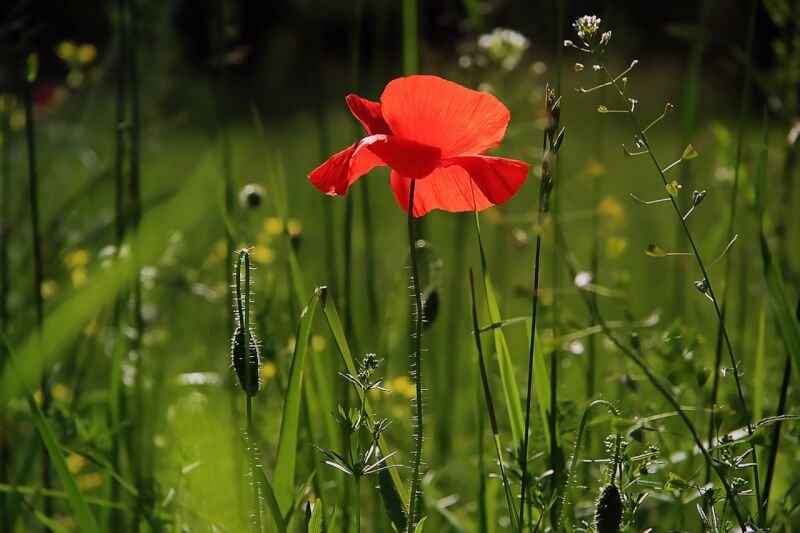
5. Raised Beds for Small Spaces
Limited outdoor space doesn’t mean you can’t enjoy the benefits of a raised bed. Here are three ideas tailored for small spaces:
Window Sill Garden
Take advantage of your windowsills and create a mini raised bed garden right outside your window. This is an ideal option for growing herbs, small flowers, or even small vegetables. Choose a compact and shallow raised bed that fits securely on your windowsill, and you’ll have a charming garden view right from your kitchen or living room.
Balcony or Patio Raised Bed
Transform your balcony or patio into a green oasis by incorporating a raised bed. Opt for smaller, space-saving designs that will fit comfortably in your limited outdoor area. You can use materials such as lightweight plastic or fabric containers with built-in drainage or invest in a compact modular raised bed system for easy assembly and disassembly.
Vertical Hanging Garden
Utilize vertical space by creating a hanging garden with your raised bed. Hang small planters or containers from a sturdy trellis or railing and fill them with your favorite plants. This not only saves precious floor space but also adds a vibrant and dynamic element to your small outdoor area.
6. Herb and Medicinal Garden Beds
If you’re interested in growing your own fresh herbs or even exploring the world of medicinal plants, a raised bed dedicated to them is a fantastic idea. Here are three types of herb and medicinal garden beds to consider:
Aromatic Herb Spiral
An aromatic herb spiral is a visually intriguing raised bed design that offers a variety of growing conditions within a compact space. This spiral structure allows you to vertically stack different herbs based on their sun and moisture requirements. The varied plant heights create an enchanting visual display, and the proximity of herbs promotes cross-pollination and beneficial interactions.
Medicinal Plant Garden Bed
A medicinal plant garden bed allows you to cultivate a range of herbs and plants traditionally used for their healing properties. Research the medicinal properties of various plants and create a raised bed that accommodates their ideal growing conditions. This will not only provide you with a readily available source of natural remedies but also create a beautiful and functional garden space.
Tea Garden in Raised Bed
If you enjoy sipping on various herbal teas, why not grow your own tea garden in a raised bed? Select a variety of tea plants, such as chamomile, peppermint, lavender, and lemon balm, and create a dedicated bed for them. You’ll have an abundant supply of fresh and flavorful tea leaves, ensuring a delightful and aromatic tea-drinking experience.
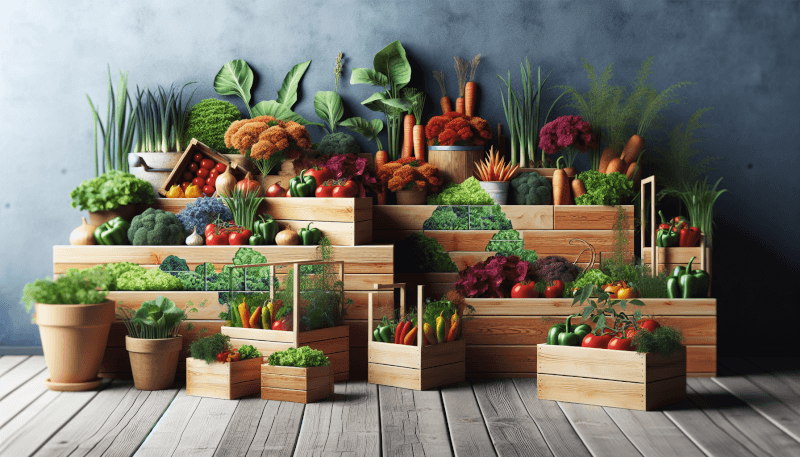
7. Raised Bed Companion Planting
Companion planting is an ancient gardening technique that involves growing different plants together to benefit one another. Here are three companion planting ideas for your raised bed:
Three Sisters Garden
The Three Sisters garden is a Native American planting technique that combines corn, beans, and squash. Corn provides a tall structure for beans to climb, while beans fix nitrogen in the soil, benefiting corn. The sprawling squash plants act as living mulch, suppressing weeds and retaining soil moisture. This traditional planting trio not only enhances the health and productivity of each plant but also creates a beautiful interplay of different foliage and colors.
Flower and Herb Borders
Utilize the edges of your raised bed by planting flowering perennials and herbs as border plants. Flowers such as marigolds, lavender, and calendula can attract beneficial insects, repel pests, and offer a burst of color. Herbs like rosemary, thyme, and basil not only act as natural pest repellents but are also a wonderful addition to your culinary endeavors. The combination of flowers and herbs will create a stunning and aromatic garden border.
Basil and Tomato Companion Planting
Basil and tomato are a classic pairing in raised bed companion planting. Basil acts as a natural pest deterrent for tomato plants, repelling insects and enhancing the growth and flavor of the tomatoes. This combination not only offers mutual benefits for the plants but also provides you with a delightful harvest of fresh basil and juicy tomatoes for your culinary creations.
8. Raised Bed for Children’s Garden
If you have little ones who love to get involved in gardening, creating a raised bed specifically for them is an excellent way to nurture their interest. Here are three fun ideas for a children’s garden bed:
Sandbox Garden Bed
Combine the joy of playing in a sandbox with the excitement of gardening by creating a sandbox garden bed. Add planting soil to a raised bed and let your children dig in and explore the world of gardening. They can plant seeds, tend to the plants, and learn about the wonders of nature in a safe and engaging environment.
Fairy Garden Bed
Encourage your children’s imagination by creating a fairy garden bed. Use miniature plants, tiny accessories, and whimsical decorations to create a magical space. Help your children design and arrange the elements, teaching them about creativity, gardening, and the importance of caring for living things.
Pizza Garden Bed
A pizza garden bed is a delicious way to introduce children to gardening and teach them about the connection between food and nature. Divide the raised bed into sections and plant different ingredients used in making pizza, such as tomatoes, basil, oregano, and peppers. Children will have fun harvesting their homegrown toppings and enjoy the fruits of their labor in a homemade pizza.
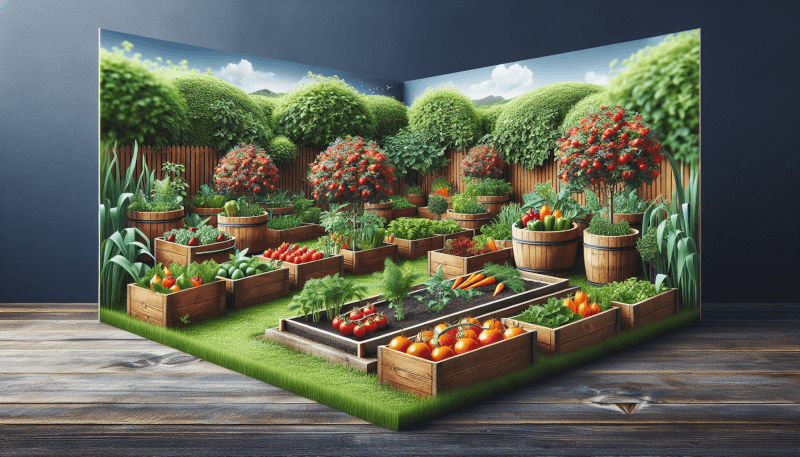
9. Raised Bed with Irrigation System
To ensure your plants receive the right amount of water without the hassle of manual watering, consider incorporating an irrigation system into your raised bed. Here are three irrigation options:
Drip Irrigation Raised Bed
Drip irrigation is a water-efficient method that delivers water directly to the roots of the plants. This system consists of small tubes with tiny holes that release water gradually. By installing a drip irrigation system in your raised bed, you can conserve water, minimize weed growth, and promote healthy plant growth.
Self-Watering Raised Bed
A self-watering raised bed is designed with a built-in reservoir that slowly releases water to the plants as needed. This system automatically waters the plants based on their moisture levels, ensuring they stay hydrated and reducing the risk of over or under-watering. Self-watering raised beds are convenient, especially if you have a busy schedule or are going on vacation.
Wicking Bed
A wicking bed is a type of self-watering system that utilizes moisture-wicking materials to provide a constant water source. This system consists of a reservoir layer filled with water and a layer of soil above it. The soil draws water upward, keeping the plants hydrated. Wicking beds are particularly useful in dry climates or if you have plants that require consistent moisture.
10. Organic and Sustainable Raised Bed Gardens
For gardeners who prioritize eco-friendly practices, creating an organic and sustainable raised bed garden is an excellent way to minimize environmental impact while enjoying the rewards of gardening. Here are three approaches:
Permaculture Raised Bed
Permaculture principles involve creating sustainable and regenerative ecosystems. Apply these principles to your raised bed by integrating companion planting, using organic mulch, and attracting beneficial insects and pollinators. By emulating natural systems, you can foster a self-sustaining garden that requires minimal external inputs.
Hugelkultur Raised Bed
Hugelkultur is a gardening technique that involves using decaying wood logs as the base of a raised bed. As the logs decompose, they act as a sponge, retaining moisture and slowly releasing it to the plants. This technique boosts soil fertility, improves water retention, and reduces the need for additional irrigation and fertilizers.
Worm Composting Raised Bed
Combine the benefits of composting and raised bed gardening by creating a worm composting raised bed. Introduce composting worms to a section of your raised bed, allowing them to break down organic matter and produce nutrient-rich worm castings. This natural fertilizer enriches the soil and provides essential nutrients for your plants, ensuring a healthy and sustainable garden.
In conclusion, a raised bed garden offers countless design options, catering to various preferences and gardening goals. Whether you’re looking for aesthetic appeal, space-saving solutions, or specialized plantings, there is a raised bed design that suits your needs. Embrace your creativity, experiment with different materials and structures, and create a beautiful and productive garden that you can enjoy for years to come. Happy gardening!

